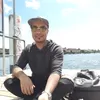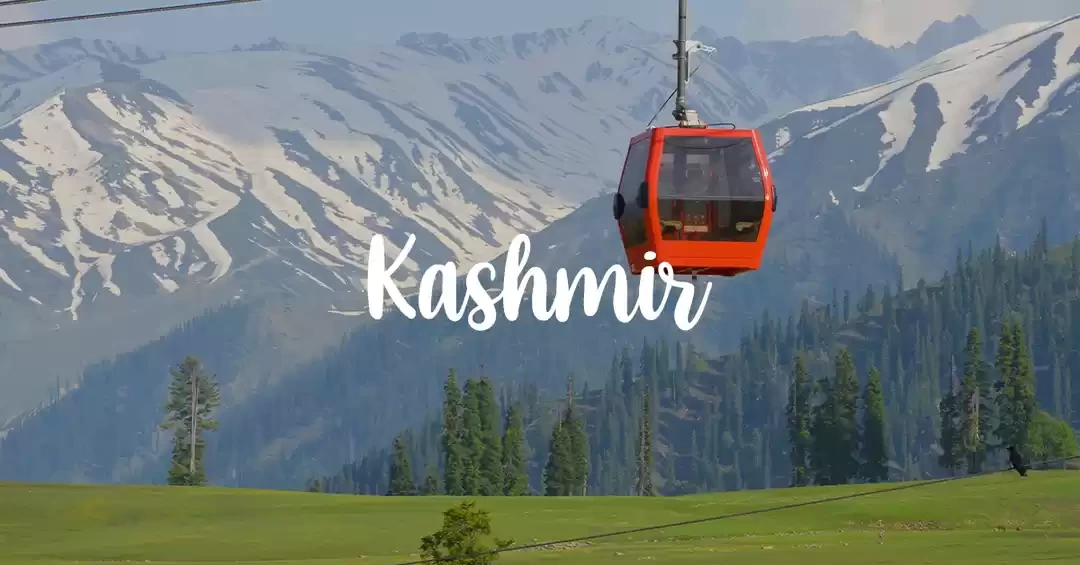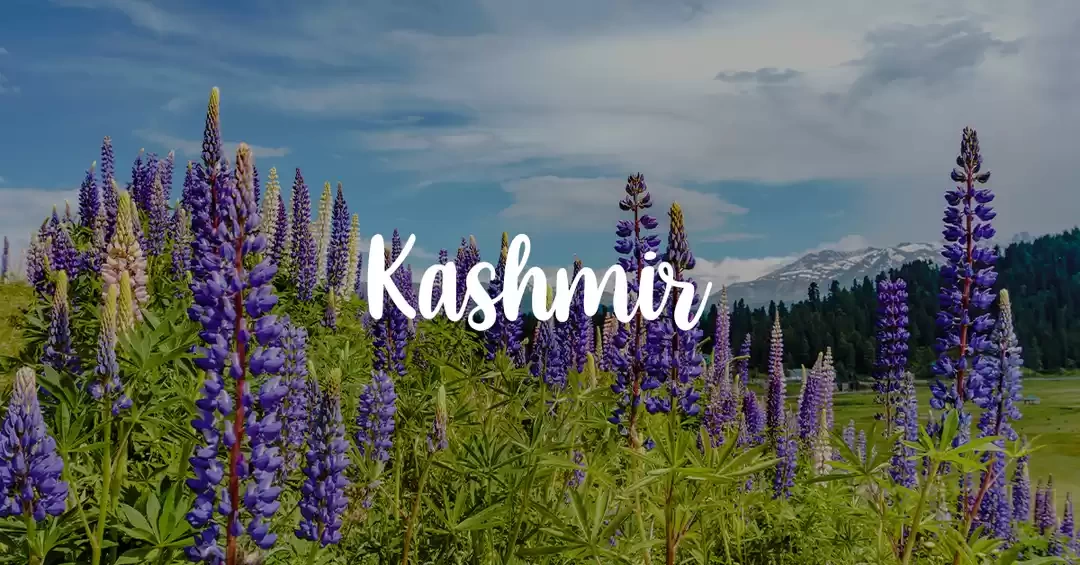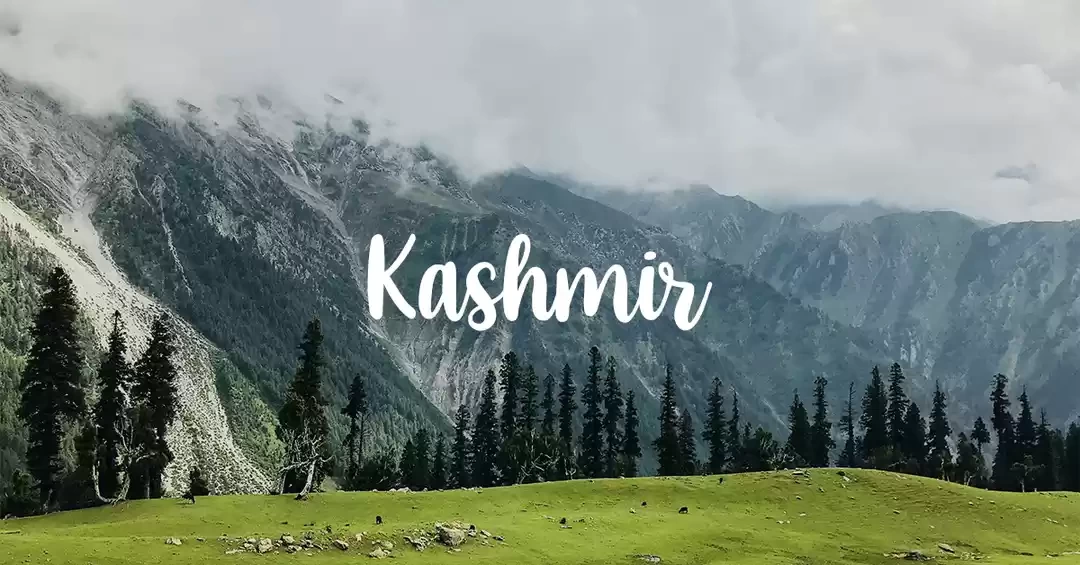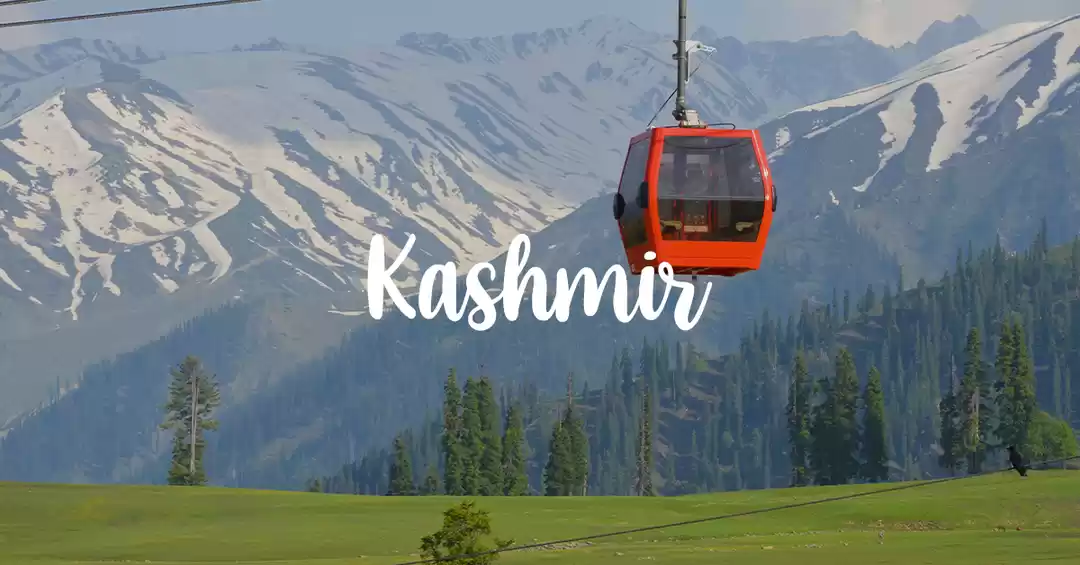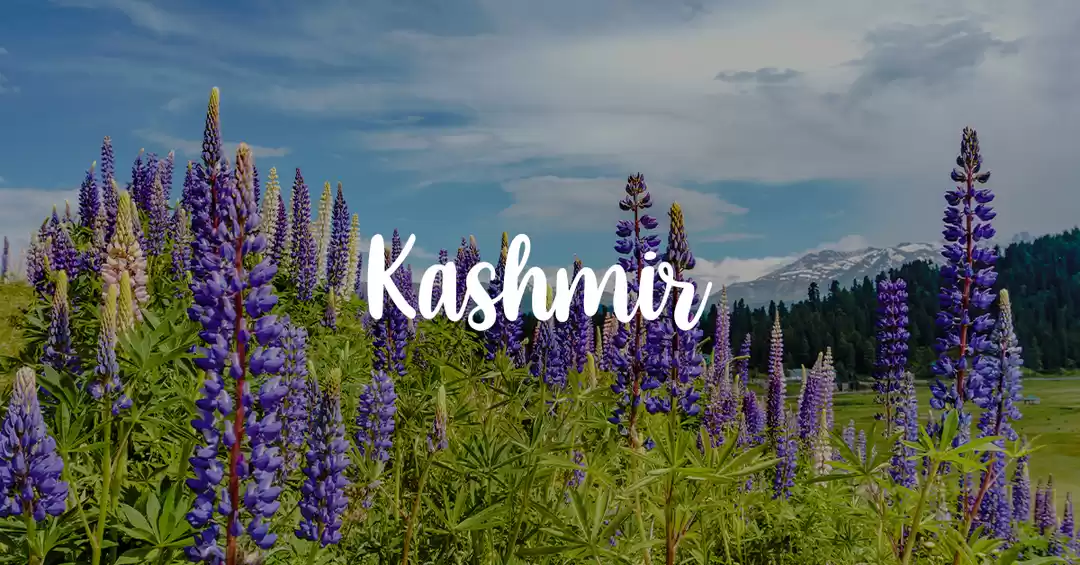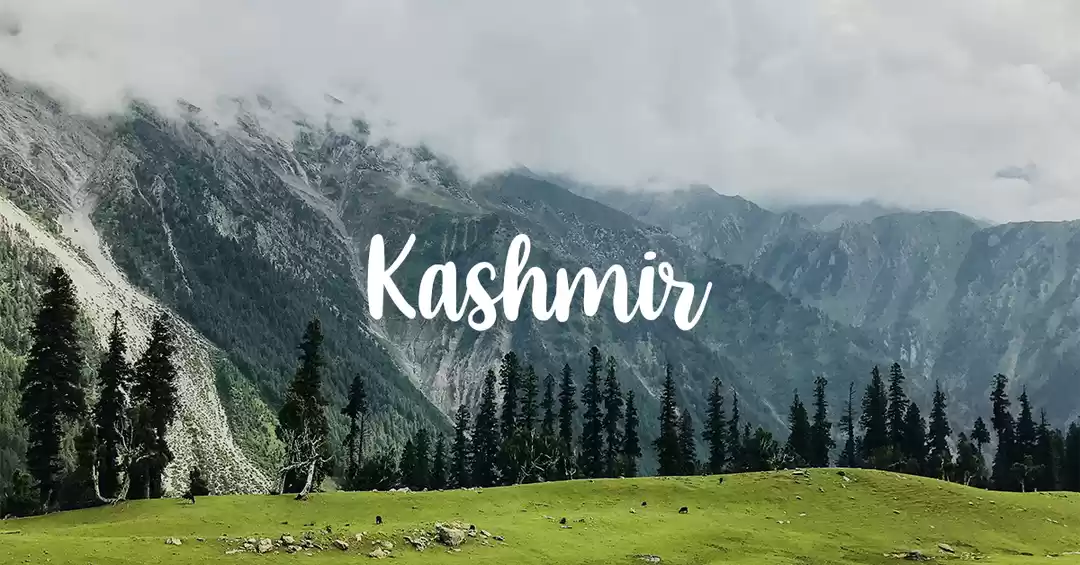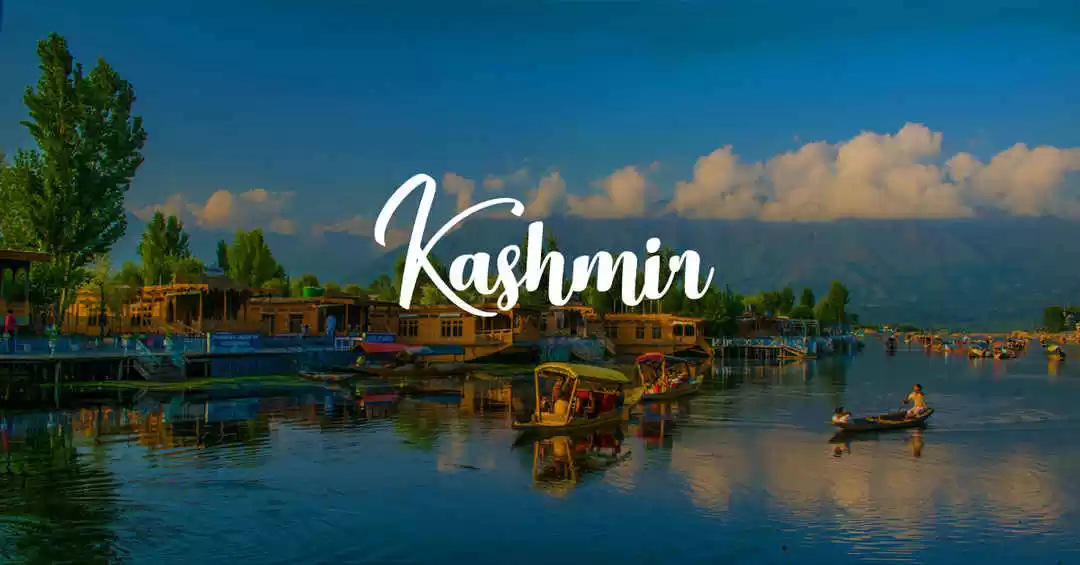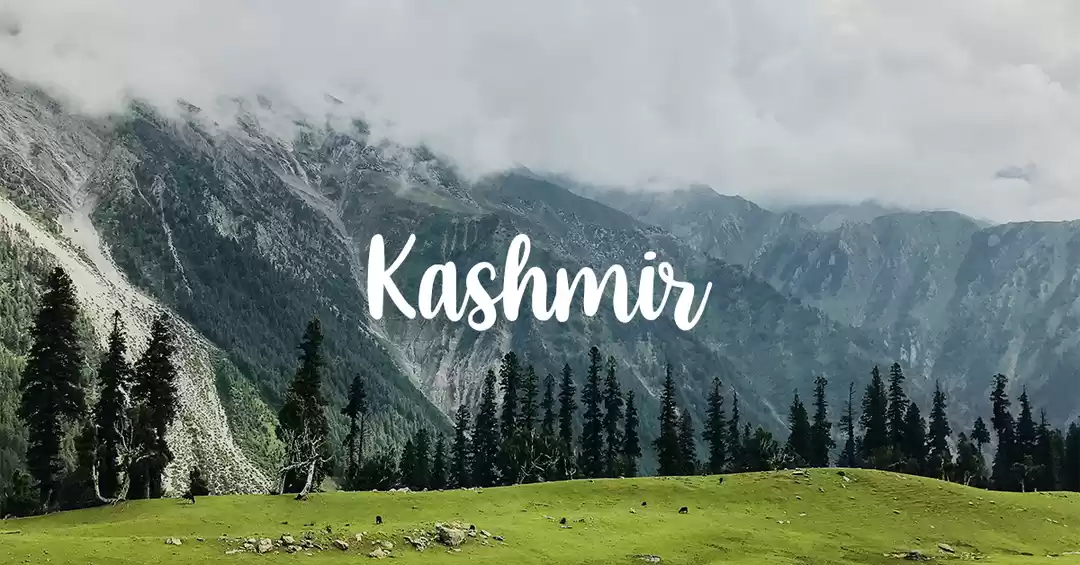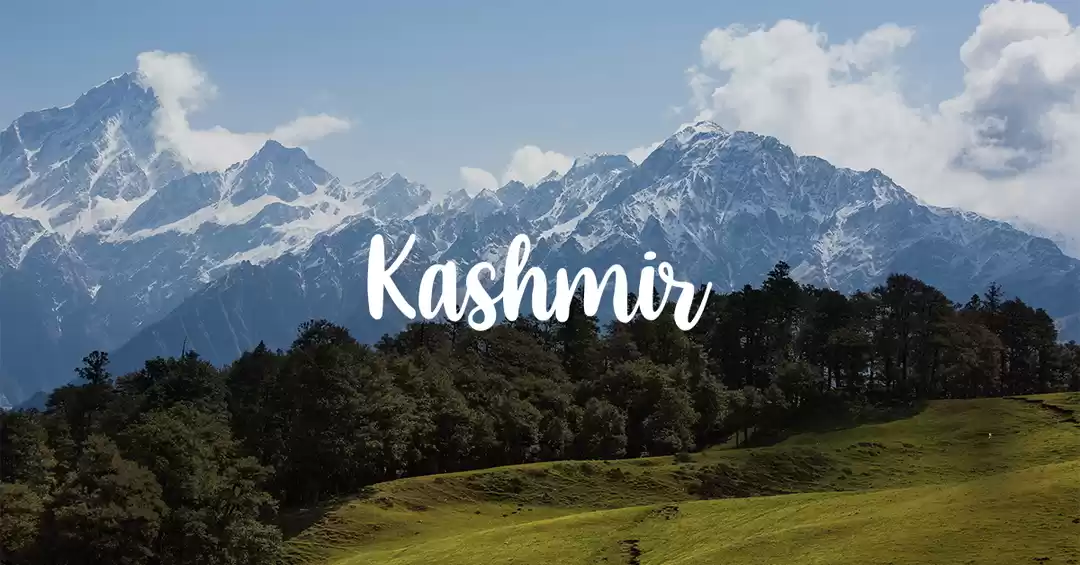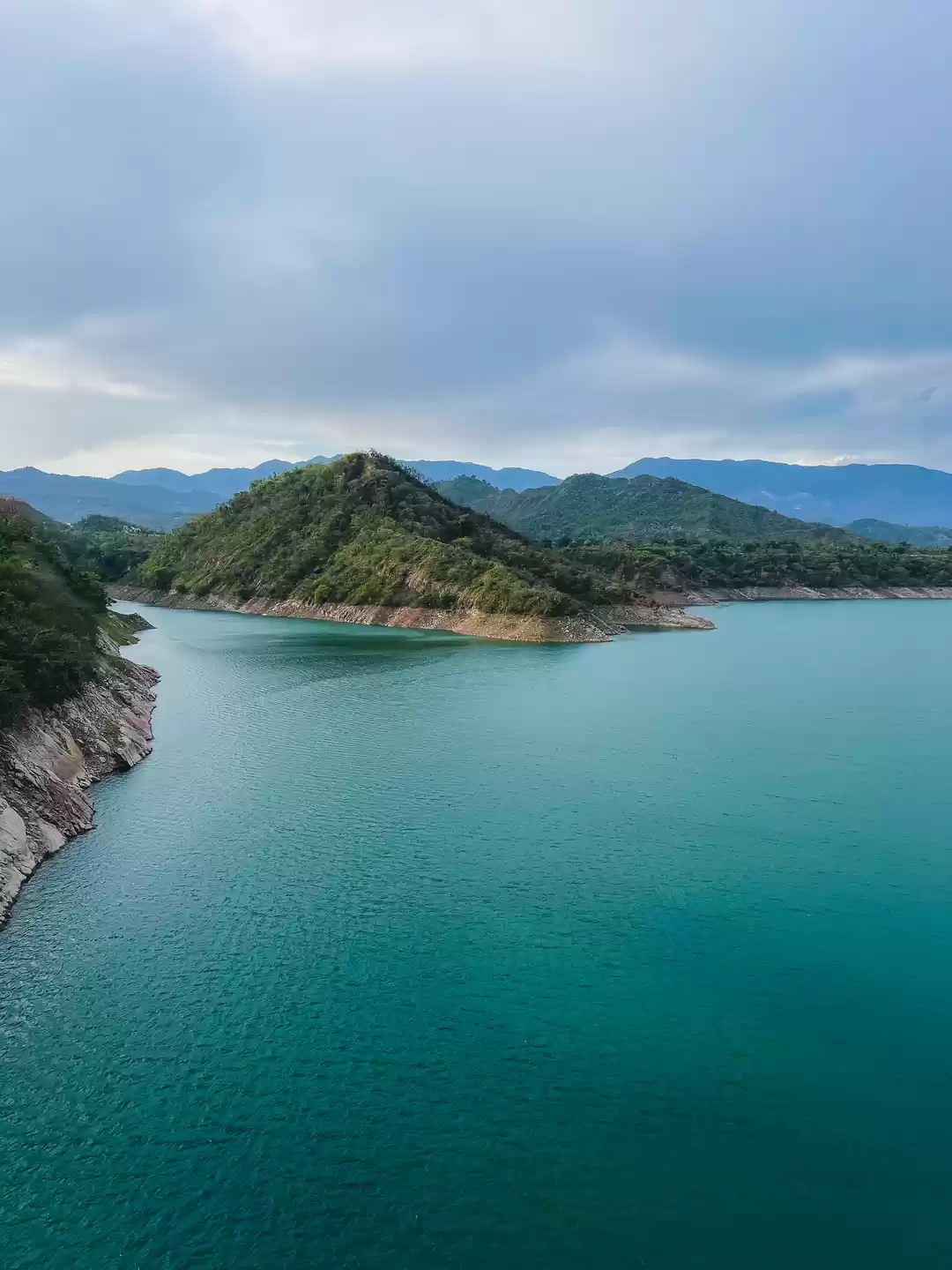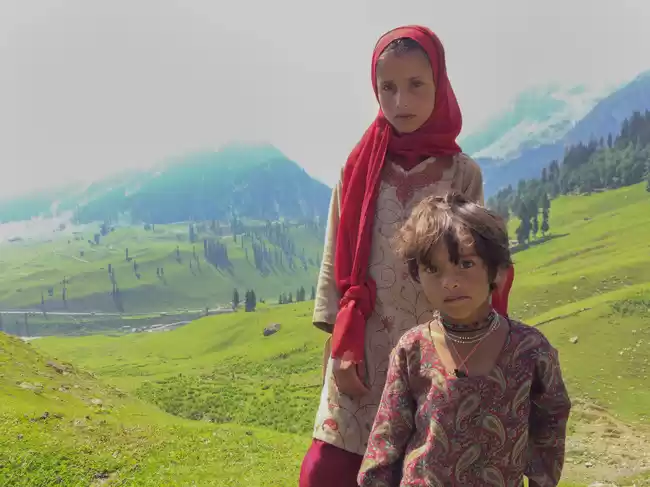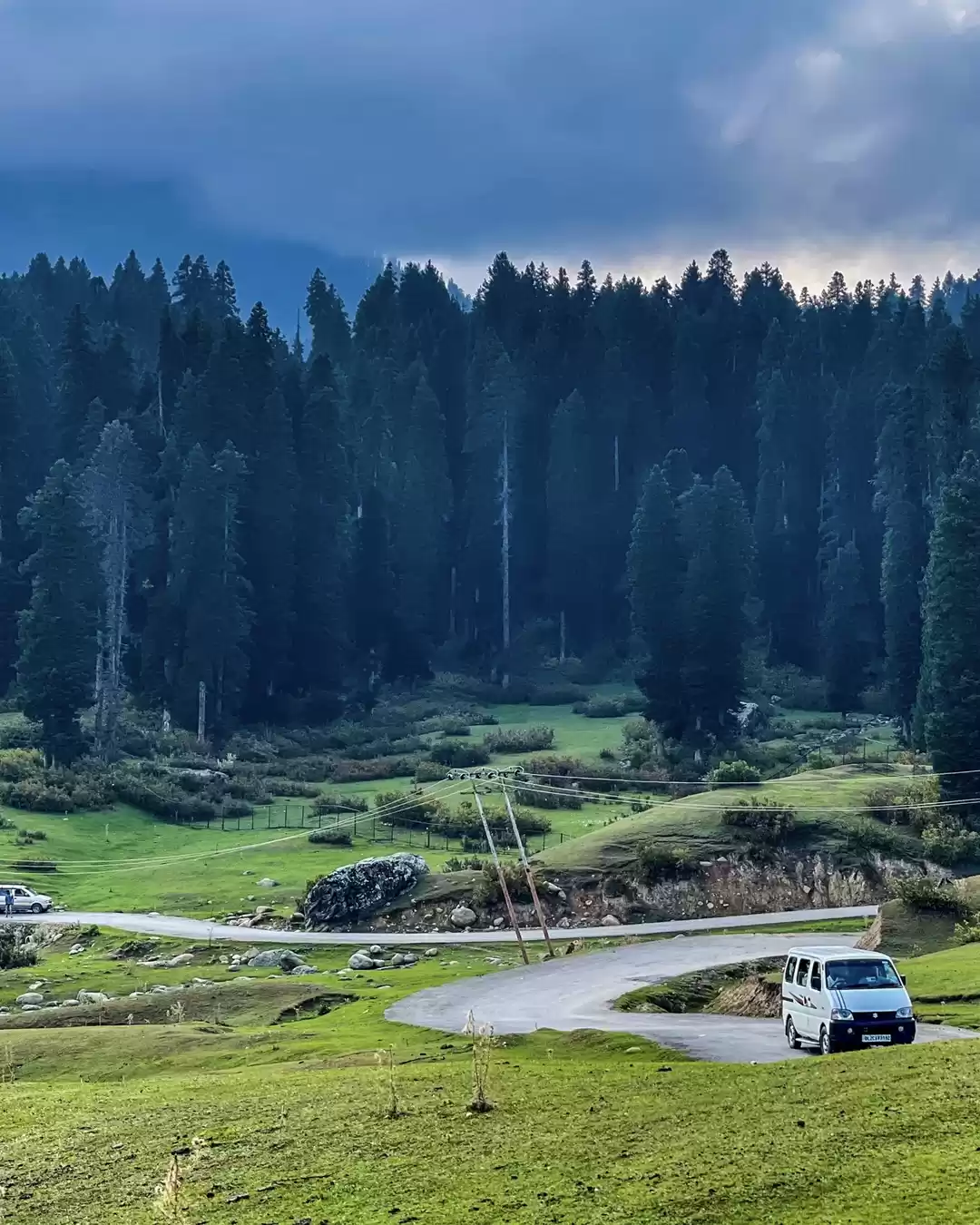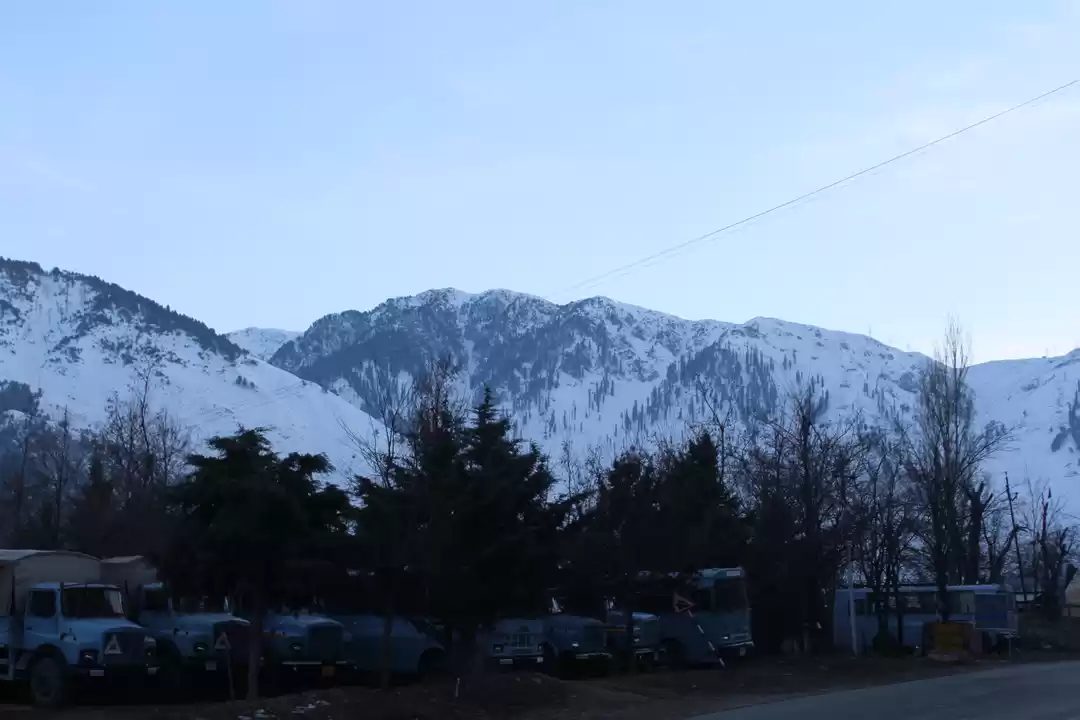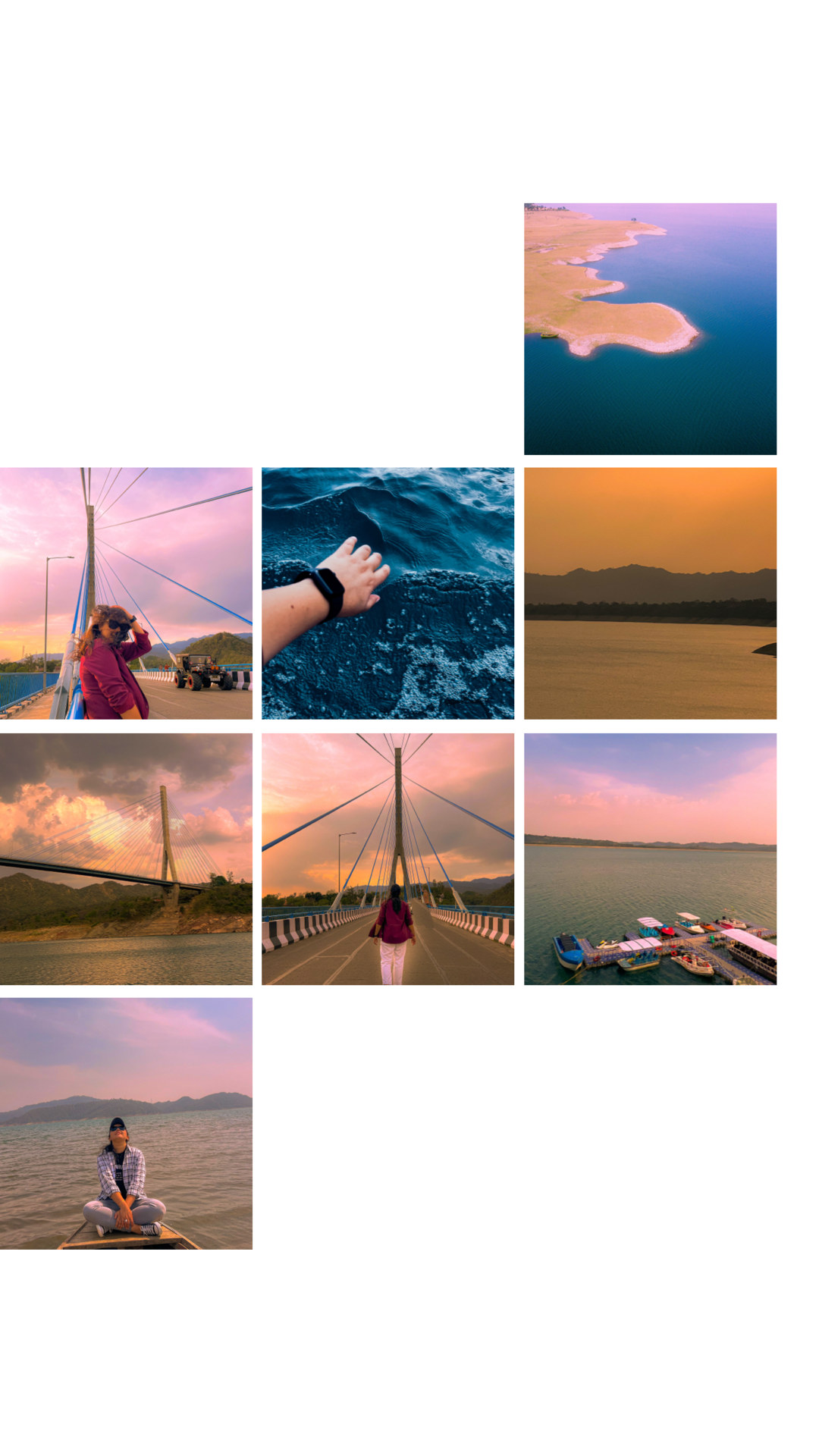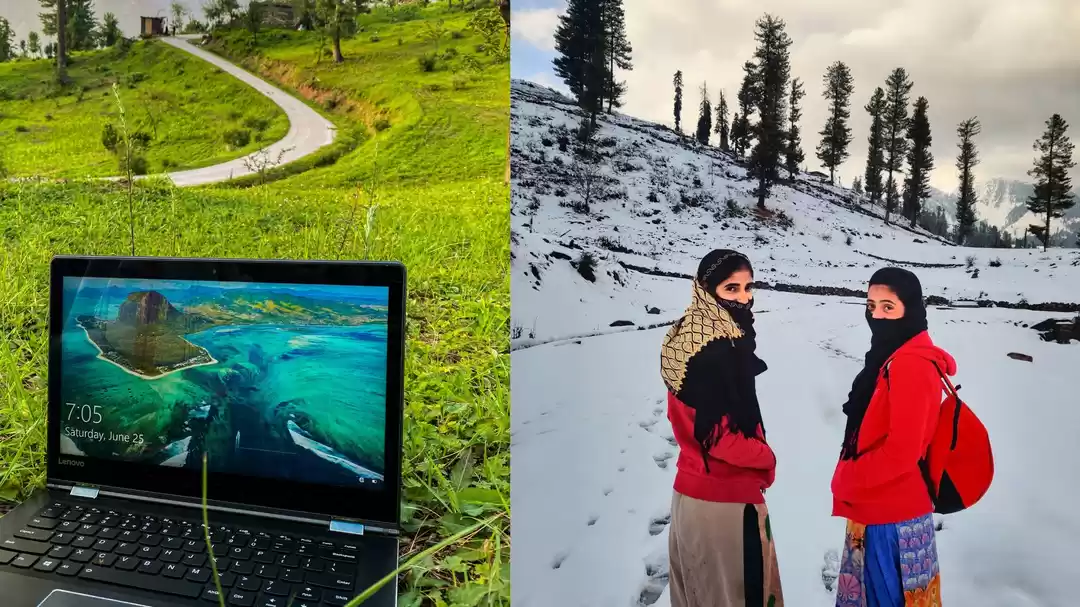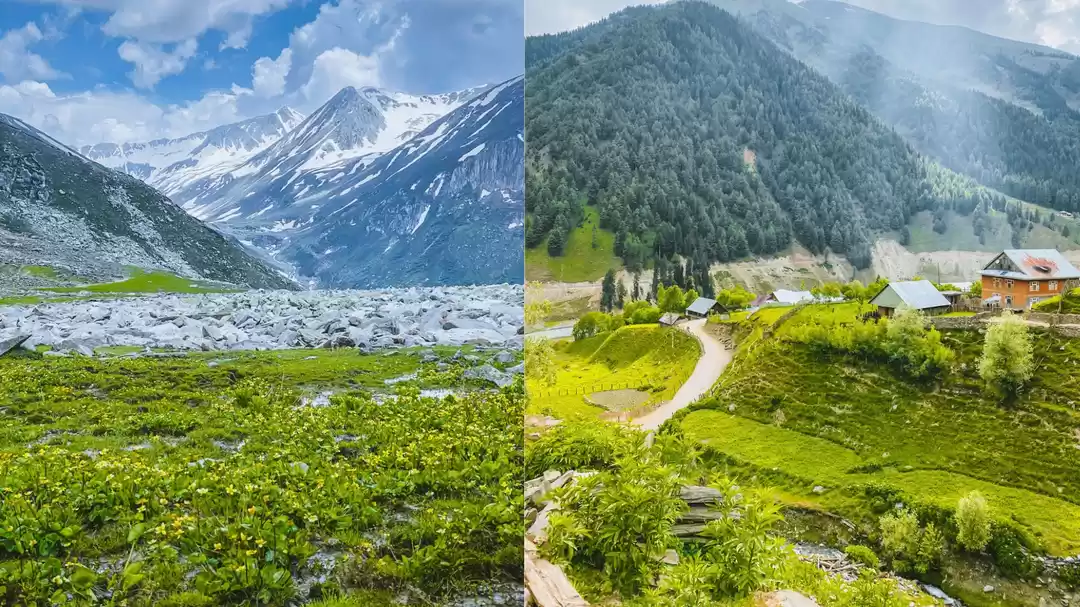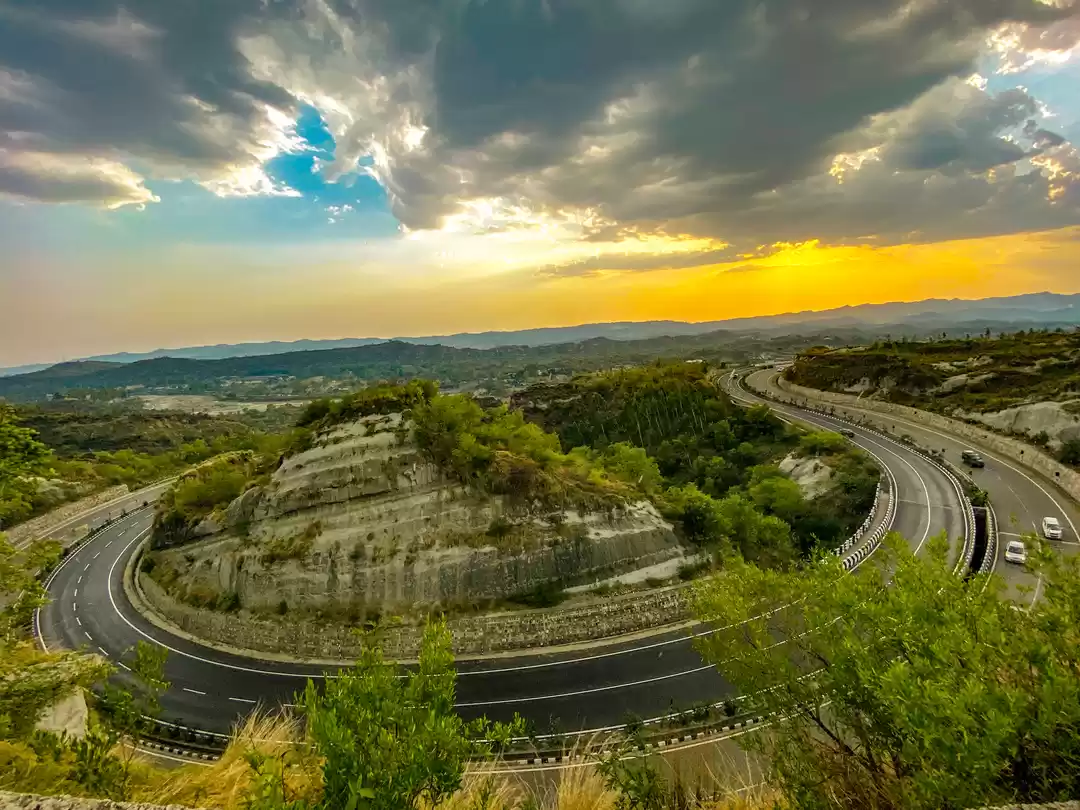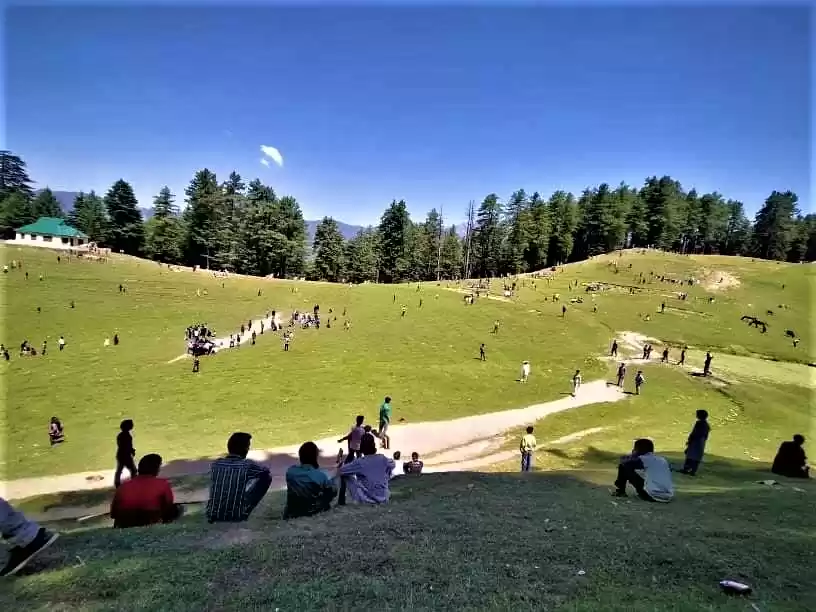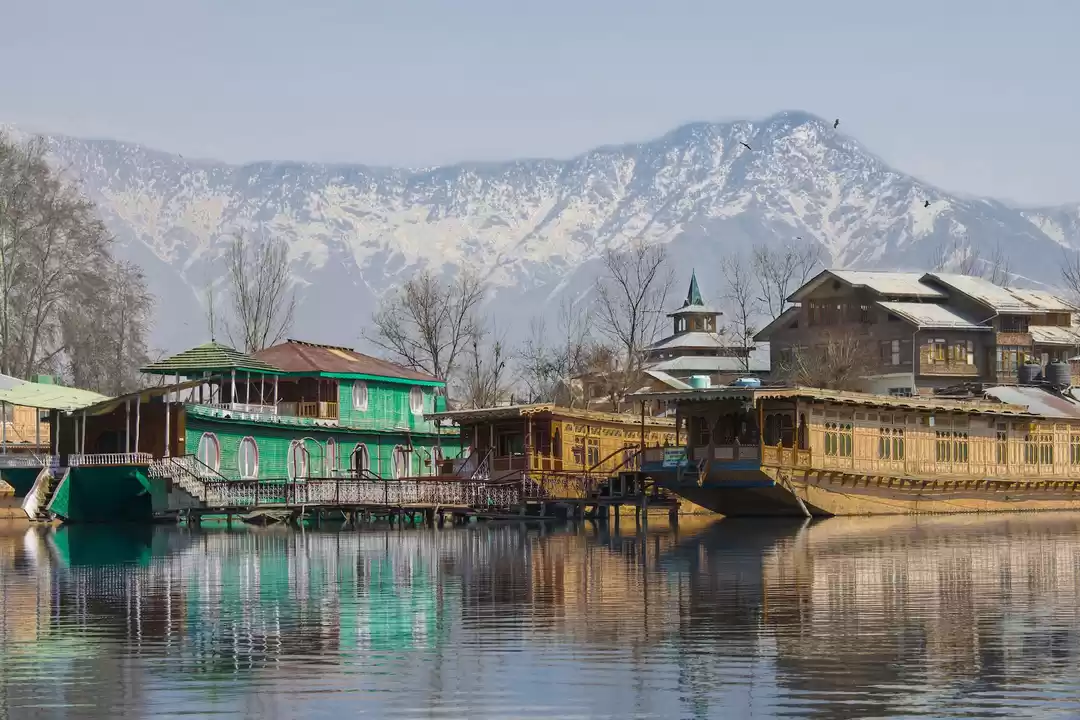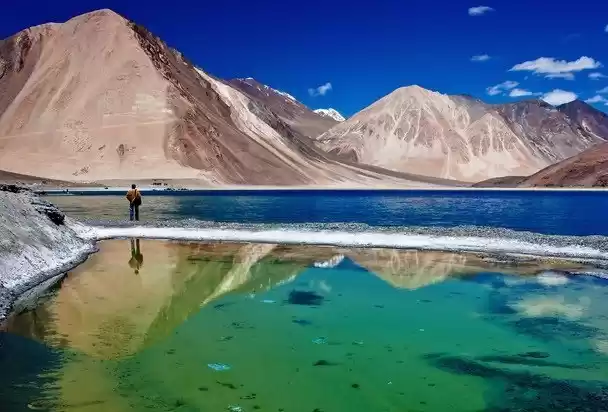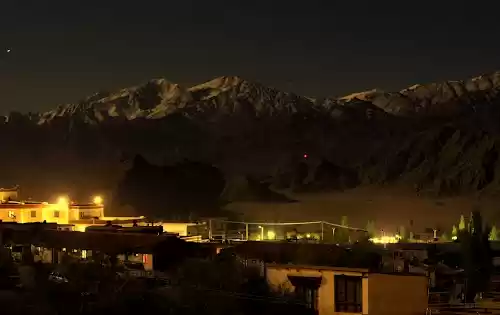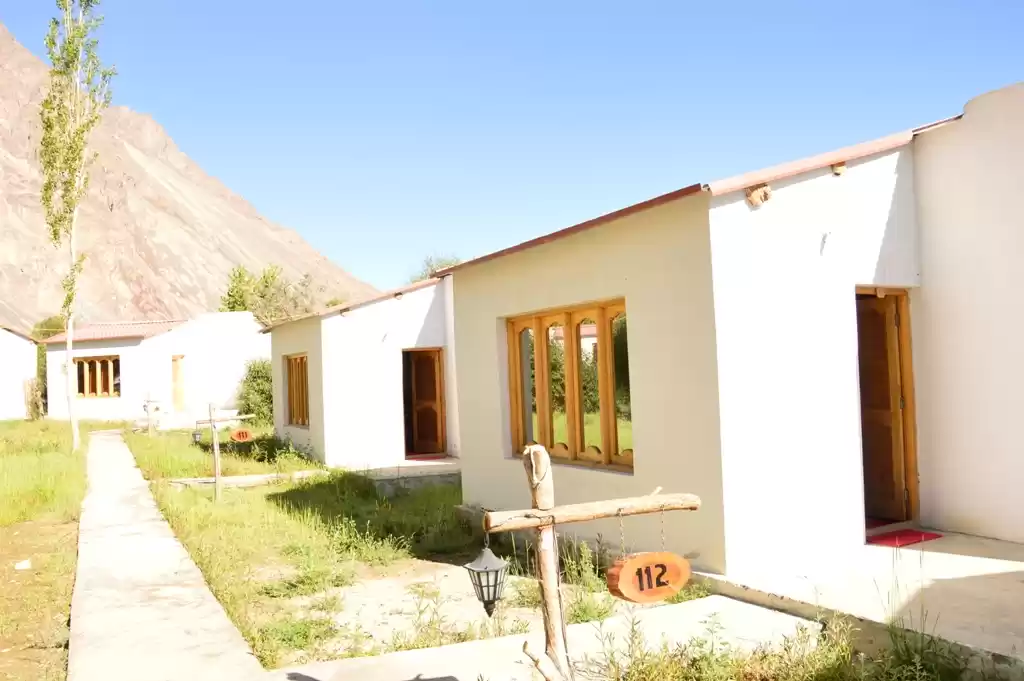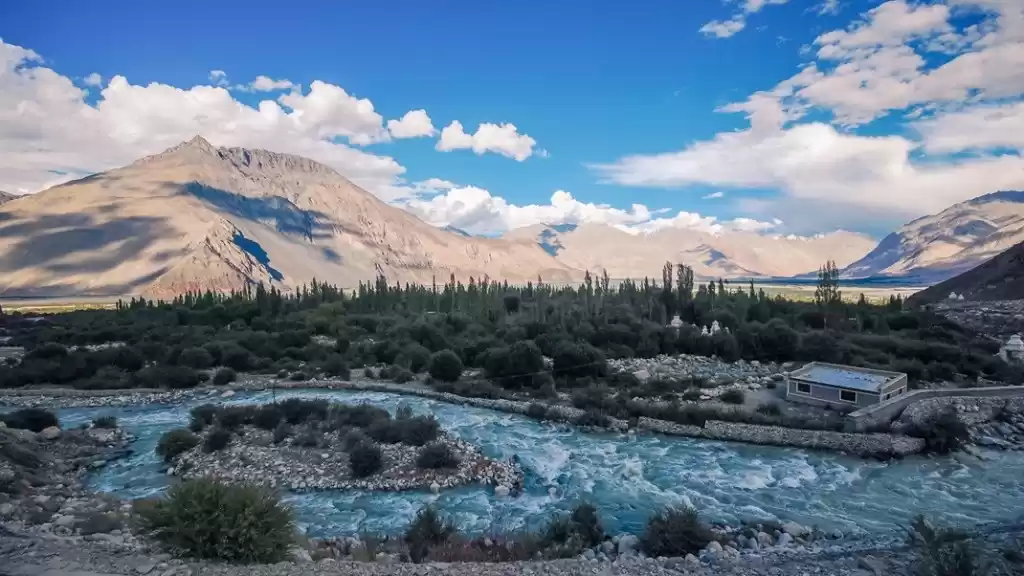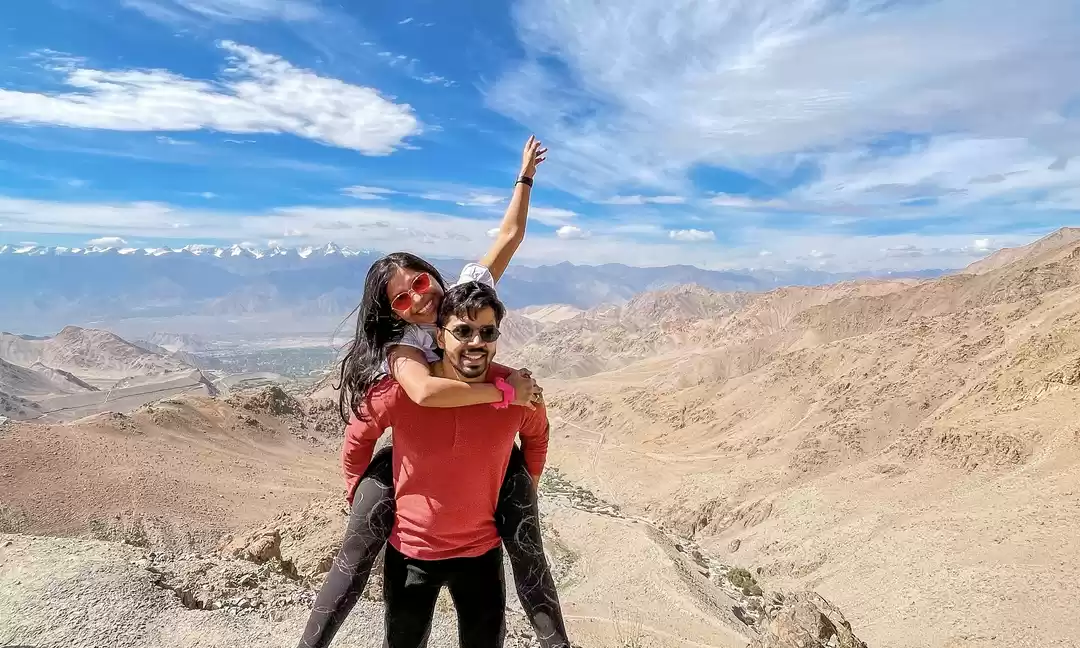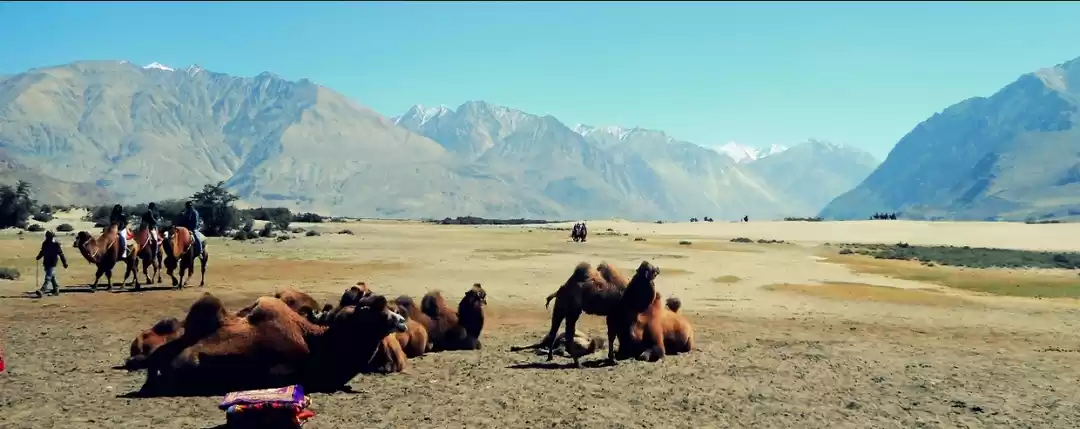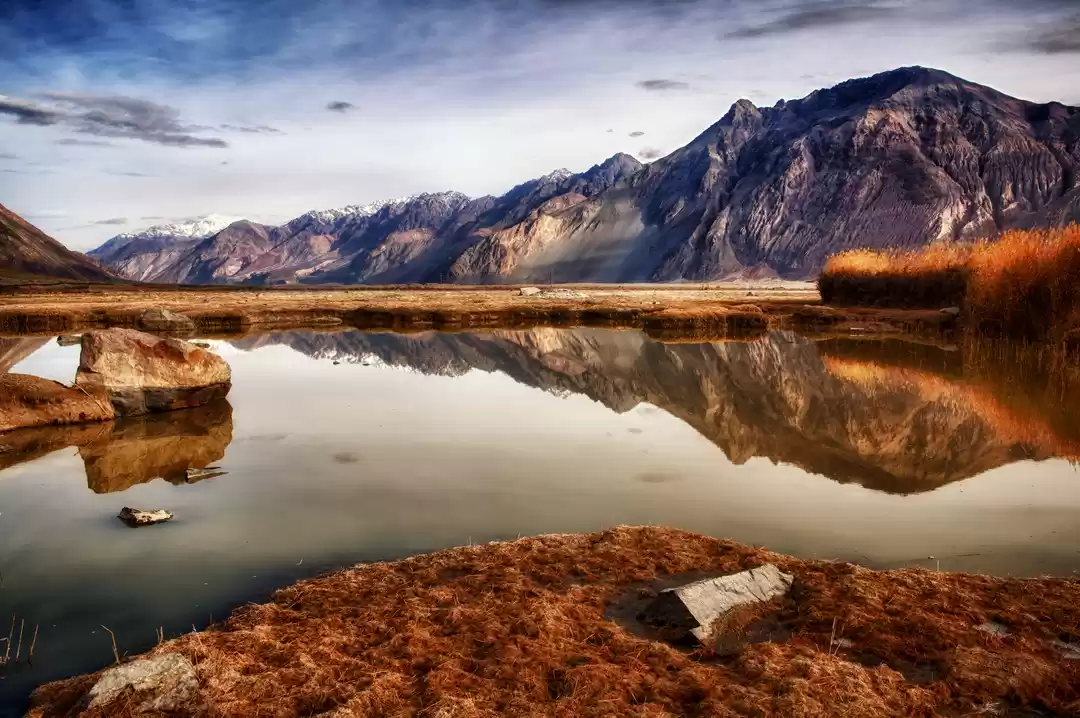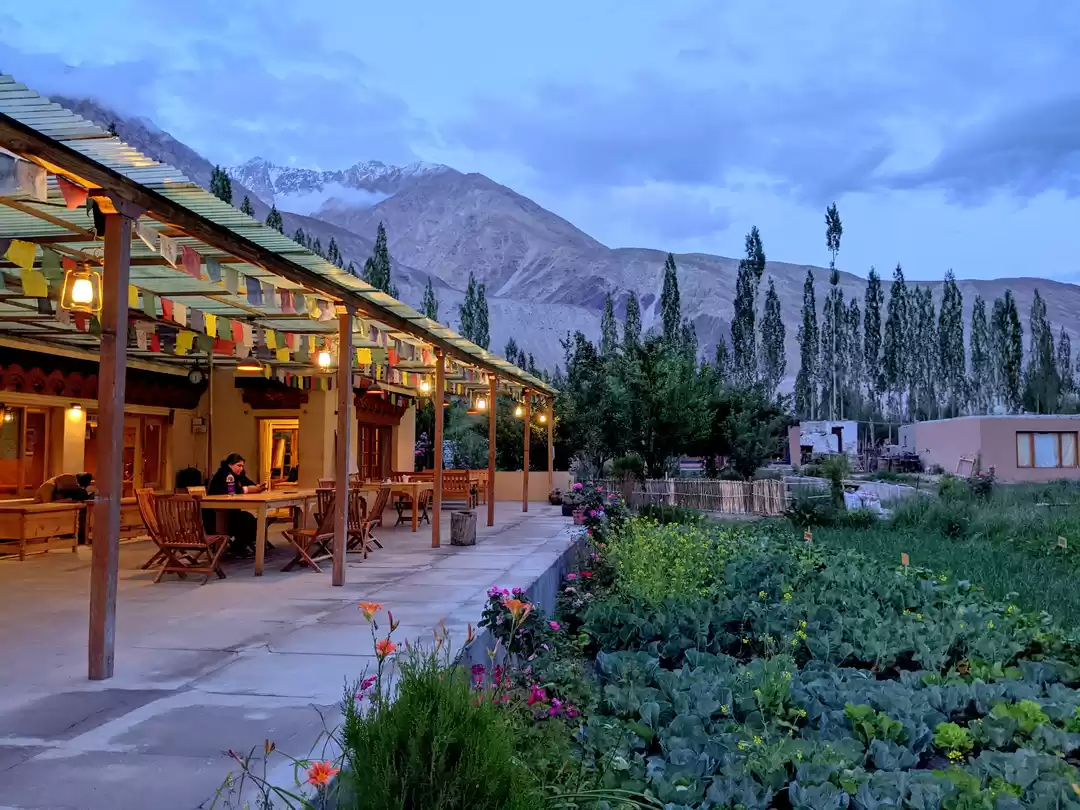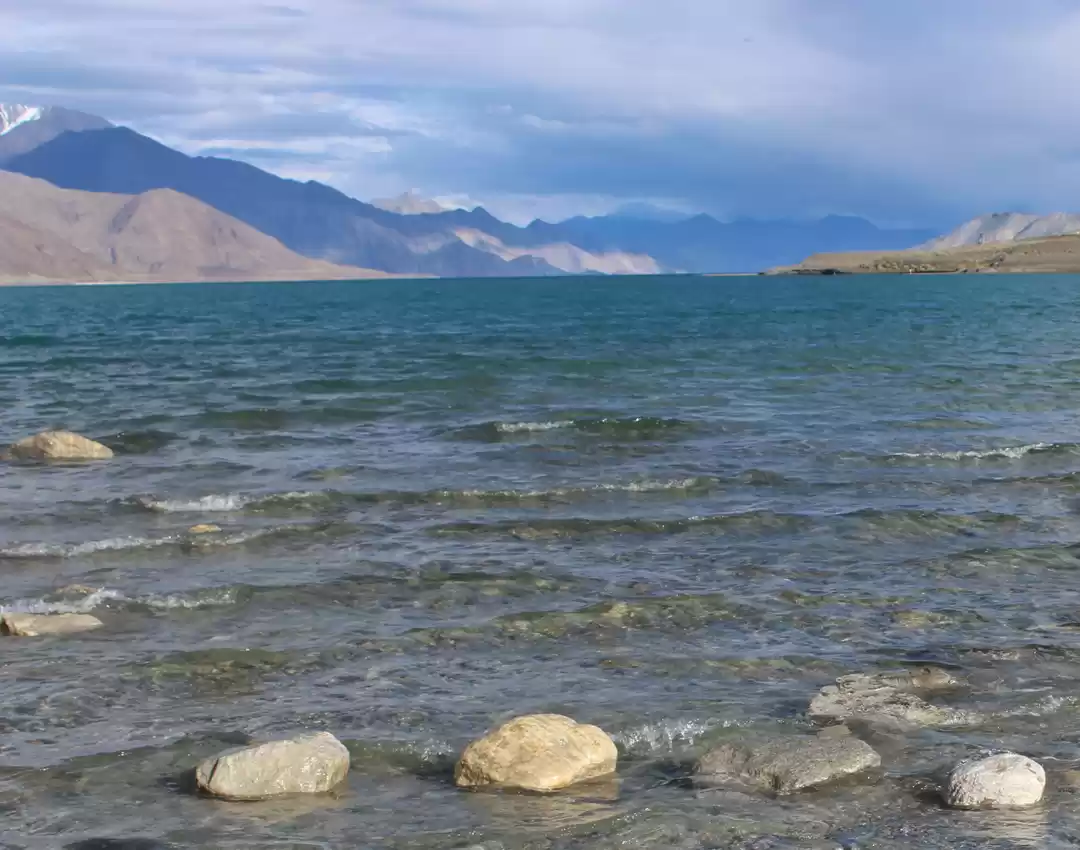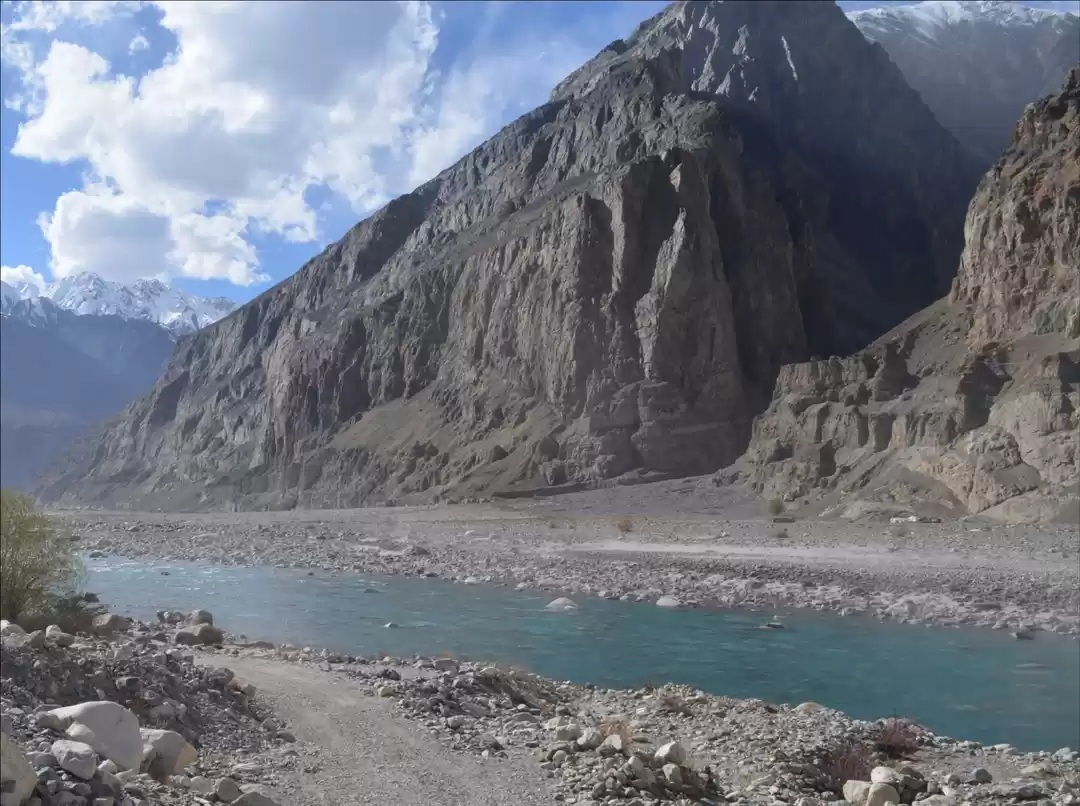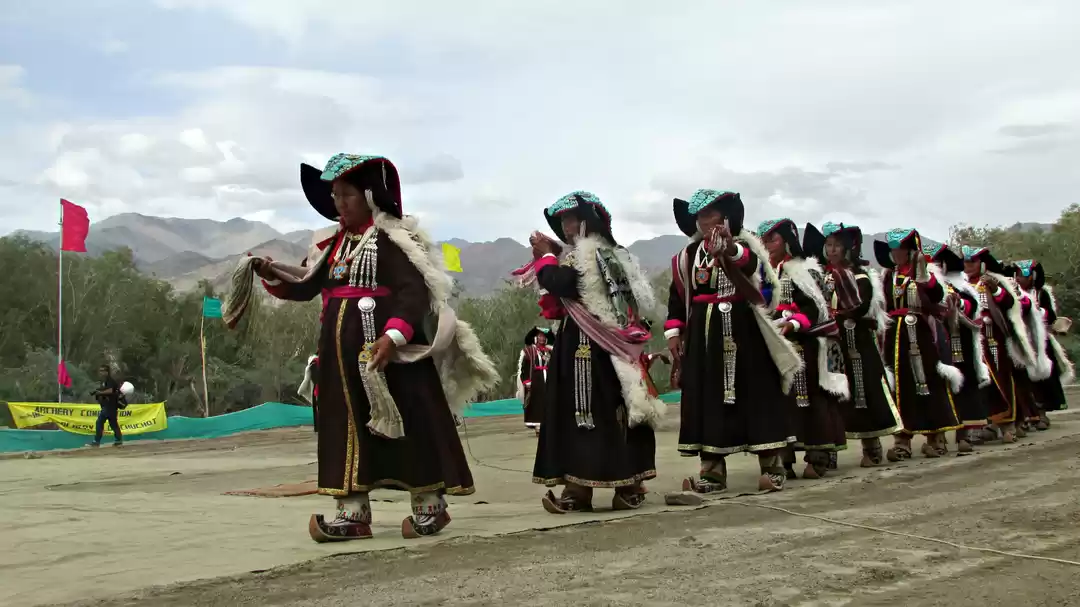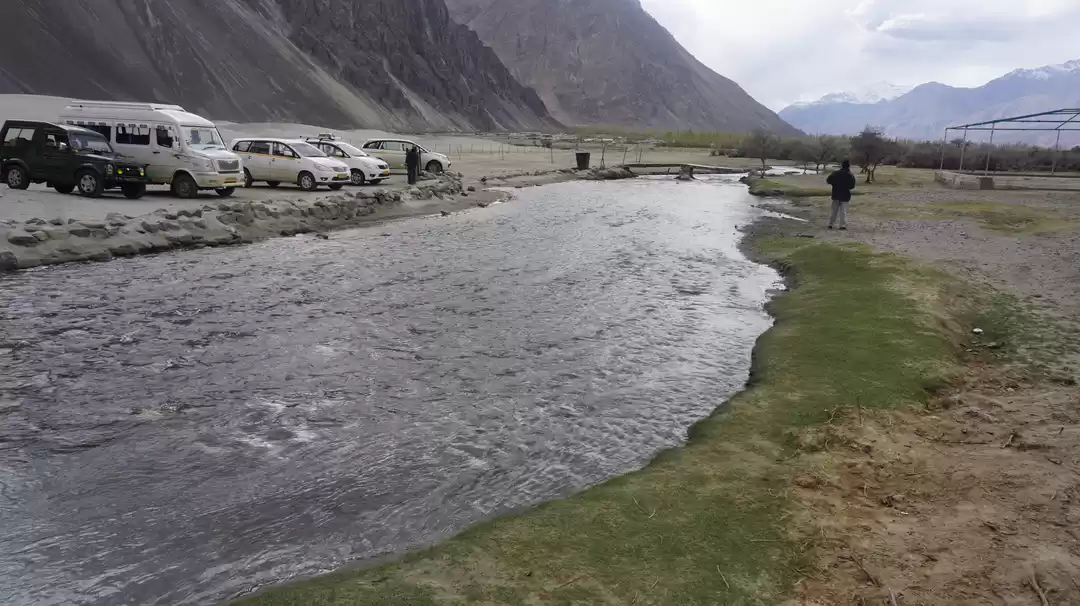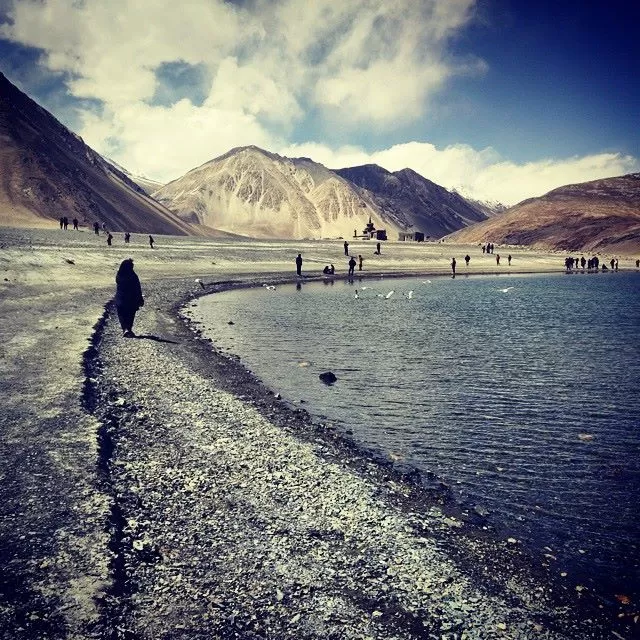
My friend Heroshi and I left our homestay early the next day. The plan was to visit the white sand dunes at Hunder. He was going to go to Turtuk afterward - popularly known as the last Indian village on our side of the Indo-Pak border. I was curious, too, but needed some time to think over it. We took the less trodden path to the desert - an off-road along the river. The path itself was cut by tiny streams in more places than one, presenting adorable Instagram-worthy scenery.
After what turned out to be a long photo-walk, we arrived at the dunes. My first thought on seeing the dunes? "These are not white!" It certainly was impressive nonetheless; I had only expected a few shades whiter. The undulating dunes were expansive, flanked by the ever pristine Shyok River and snow-capped mountains beyond on one side and barren hills and cliffs on the other. The wind was chilly and the sky, cloudy but gloomy weather conditions were not going to dampen my spirits. I saw the double-humped camels crouched together in a commercial display. They were there for the rides. I noticed a very satisfied customer, Alessio from Paris, who became a good friend very quickly. He recommended that I took the ride too. I did. It was brief and quite bumpy for comfort. Still, it was an experience, which I would remember. The camel boy took multiple pictures of me as I tried to look my coolest best but in vain. I never look cool. Not especially while atop a camel.


By the end of the ride, I had made up my mind about going to Turtuk. I wanted to know what lies ahead and beyond the Nubra Valley. Soon, the three of us stranger-friends with the grand plan of visiting Turtuk headed to Diskit where we were to get the bus from. We hitchhiked to Diskit with a kind trucker who refused to take money for the ride. It is always nice to get freebies when traveling on a budget. At Diskit we asked around for a bus or other means to get to Turtuk that afternoon but much to our disappointment, we were told there was a landslide en route to the village and vehicular movement was restricted.
Over lunch and chai we brainstormed our options. Consulting Lonely Planet and other travel material on us, we agreed to go see the hot springs at Panamik and then come back to see the Monastery ruins at Tegar village where we would spend the night. This plan involved taking the bus to Sumur and change transport for further. But once again our plans went for a slight toss as we got to Sumur later than the original ETA. We decided not to go to Panamik any longer; it did not have great reviews on our rather outdated Lonely Planet anyway. So we walked to Tegar village instead, which turned out to be a beautiful experience in itself. We walked the quiet black-topped road through a scattering of quaint little Ladakhi houses, flocks of sheep, vegetable gardens, and wildflowers. We found ourselves a guesthouse without much difficulty.
After checking in, we dumped our backpacks and headed towards the ruins which were just a short hike away. The dilapidated tiny little prayer rooms amazed me the most. It was here in these small dome-like structures that monks would meditate for months on end! The other parts of the ruined monastery were equally intriguing. The stupas still stood erect, while large parts of the once imposing institution seemed to be in shambles. The views of the valley from the ruins were spectacular in every sense of the word. The vantage point, the breeze, the historical aura of the place, all must have added to the visual experience. The valley looked exceptionally lush; the river, serene and blue; the mountains beyond, majestic as can be! I sat on a rock quietly for a few moments, just being and being close to the splendour around me. It was naturally meditative and felt the most peaceful I had ever felt in a long time.


